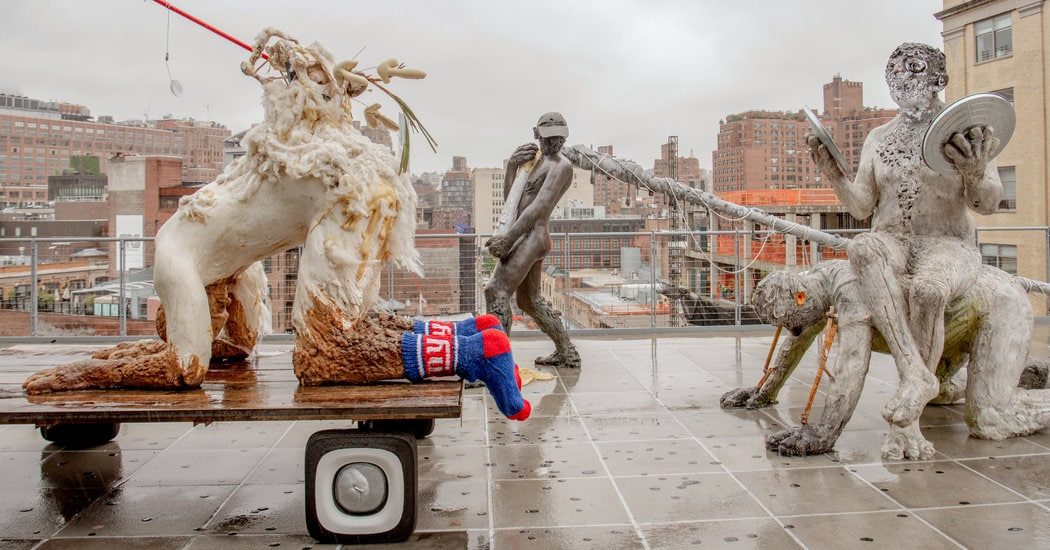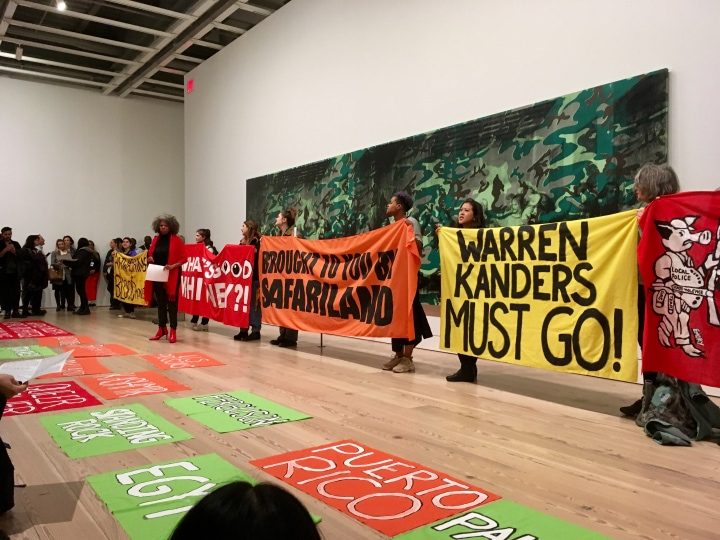The Whitney Biennial
The Whitney Biennial in New York often proves a reflection point for US social politics. Since the curator, Elizabeth Sussman’s landmark 1993 edition. She directly took on the Reagan-era Culture Wars using provocative works by women and LGBTQ artists. No stranger to controversy this year’s edition curators Jane Panetta and Rujeko Hockley, face protest by the group – Decolonize This Place; DTP.
Jane Panetta and Rujeko Hockley, the curators behind the 2019 edition, are posed to navigate these political waters. This year’s organizers are on staff and know first-hand the controversies that the biennial can inspire.
“We’ve tried to use the challenges and conversations that came out of the last [edition] as a productive lens for our work,” Panetta says. There is a great deal of work in the show that comes to terms with socio-political concerns. Not excluding challenging race and gender, financial inequality, gentrification and the vulnerability of the body.
The activist group Decolonize This Place (DTP) held weekly protests against Warren B. Kanders, the owner of a company, Safariland, that produces military supplies. A letter recently published calls for his removal by Verso press. The letter includes around 200 signatures from artists, curators, critics the letter includes signatures of more than half of the artists in the exhibition. Among these are Colectivo los Ingrávidos, Fernandes and Nicole Eisenman.

Drama at the Whitney
Considering the stress on inclusion and diversity, the 2019 biennial is in political hot water. Artist Michael Rakowitz refused to participate in the show. This act of protest against the Whitney Museum is due to their financial ties to Safariland. A company owned by the museum’s vice-chairman Warren Kanders. Safariland manufactures tear gas canisters that have been used against asylum seekers along the US-Mexico border.
It is not surprising considering the current political climate that passionate artist take issue with board members at the Whitney Museum. We are in a crisis, the environment, the poor, the truth are all in the crosshairs of the political machine. However, it is the art museum, to take a stand, and take place on the grandstand of the political play.
The mounting pressure has yet to yield any action on the Whitney’s part. However, it has prompted concern that these actions place undue duress on artists. For whom being included in the exhibition is a huge boon to their career.
Marz Saffore is one of the core members of DTP. She is helping the protest taking place. She states that the issues are collective. “As a queer black woman who is also an artist, there is no separation between politics and livelihood,” she says. Although she notes that there was never any call by DTP for this year’s artists to withdraw.

This Years Artist
After visiting over 300 studios, Panetta and Hockley assembled one of the Whitney Biennial’s most diverse rosters of emerging and mid-career American artists. The majority of artists this year are of color. There is also an even divide between male and female participants. “We wanted our biennial to feel [as though it was] of this historical moment and to be reflective of the world we actually live in,” Hockley says, adding that it was “critically important” to present a multiplicity of voices in a wide range of mediums.
The 2019 biennial boasts a larger range of new media and performance works than in previous years. Including significant video components in the galleries and in a standalone program in the museum’s theatre. The galleries feature work by Korakrit Arunanondchai, Garrett Bradley, Colectivo Los Ingrávidos, Thirza Cuthand, Forensic Architecture, Ellie Ga and Ilana Harris-Babou. Consequently, this years group of artists is also younger than in previous years. Three-quarters of the artists are under 40, and 20 of them under 33.
Arts And Politics

Protest at the Whitney Museum of American Art – 2019
All museums have ethical practice guidelines in place. Unfortunately, these don’t always cover the full range of potential objections to trustee appointments. At present these issues include involving arms manufacture, corporate drug production, and climate change. These issues are global issues. As Marz Saffore states, these are issues that affect the collective community. The judging panel is charged with reviewing these circumstances case by case. Tasking them with the hard goal of finding a balance between idealism and funding.
Consequently, the question of Mr. Kanders’s staying or going doesn’t outweigh the discussion and protest his presence has raised. Hopefully, leading to further discussions about institutional ethics, and politics in our art.